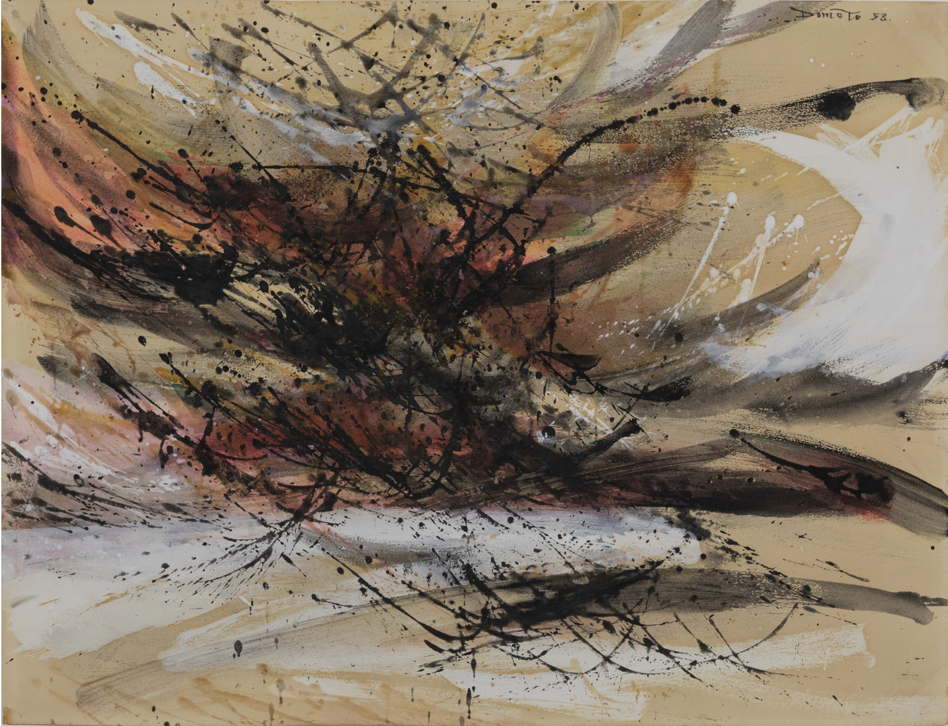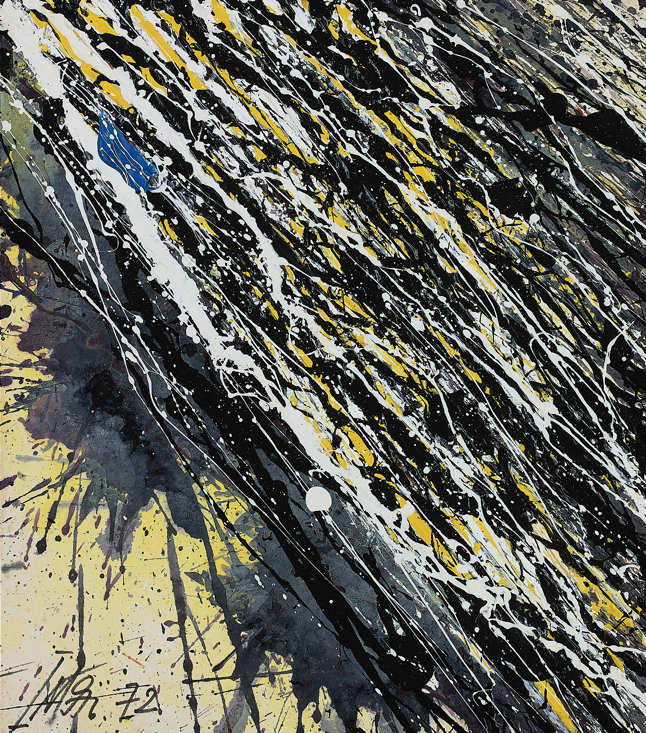Domoto Hisao
Informel is an avant-garde art movement that emerged in France and other European countries from the mid-1940s to the 1950s and shares the same direction as action painting, which developed in the United States around the same time.
The name “informel” means “atypical,” and was coined by the critic Michel Tapie. It was an attempt to reject all pictorial traditions and to question the nature of expression without being bound by “form” by eliminating form from painting and emphasizing the process of painting, such as strokes, and the matiere of the materials.
It was pioneered by the solo exhibitions of Fortrier, Dubuffet, and Volls held in Paris soon after the war, and took a clear form in the “Confrontation of Passions” (1951) and “The Meaning of informel” (1952) exhibitions organized by Tapie. The Japanese artists who followed suit were Domoto Hisao and Imai Toshimitsu, who were living in Paris at the time.
Domoto Hisao(堂本尚郎) was born in Kyoto in 1928 to a prestigious family that had produced many artists, including his uncle, Domoto Impression, and made a spectacular debut at the age of 23, winning a special prize at the Nitten (Japan Fine Arts Exhibition). In 1956, he became acquainted with Michel Tapie and Sam Francis and began working as an informel artist. 1957 saw his first solo exhibition at Galerie Stadler, and since then, he has been based in Paris and New York, developing a unique expression with a strong sense of materiality that has been highly acclaimed at international exhibitions. He is one of the leading Japanese artists in the field of informel and has received high acclaim at international exhibitions.

Domoto Hisao ‘Untitled’
(1958) Gouache, oil on paper ⒸGALLERY HAYASHI + ART BRIDGE
Imai Toshimitsu
Imai Toshimitsu(今井俊満) was born in Kyoto in 1928 and studied oil painting at the Tokyo National University of Fine Arts and Music for one year as a temporary student before moving to France in 1952. He also introduced this movement to Japan.
He also introduced the movement to Japan, creating an informel whirlwind in the art world and encouraging exchanges between Tapie and others with the Kansai avant-garde art group, the Gutai Art Association.

Imai Toshimitsu ‘ONDE
(1972) oil on paper ⒸGALLERY HAYASHI + ART BRIDGE
Imai’s works are characterized by his unique non-tangible paintings in which heavy matiere is covered with delicate lines. Forms reminiscent of the sun or the moon dissolve in the heavy paint, emphasizing only the materiality of the materials. Unformel was introduced to Japan in 1956 at the “World Art Today” exhibition at the Takashimaya Department Store in Nihonbashi, and the Gutai Art Association, which was engaged in an anti-art movement, was not only closely associated with it but also became involved in the Unformel whirlwind in Japan.
As seen in the example of Gutai Art, many artists not only in Japan but also around the world participated in and were influenced by informel. The group’s members included Jackson Pollock, Willem de Kooning, Lucio Fontana, Nicolas Stahl, and Zao Wookey, among others. As this fluid composition of members shows, one of the characteristics of Anformel was its loose-knit organization.
As a result, this loose cohesiveness shared a deep mutual commonality in the turbulent social climate of the postwar period with art movements around the world, such as Abstract Expressionism in the United States, Cobra in Europe, and the Gutai Art Association in Japan, which were developing in the same vein, and had an extremely significant impact on the development of art in the years that followed. The two movements had a profound mutual influence on the development of art in the turbulent social climate of the postwar period.

